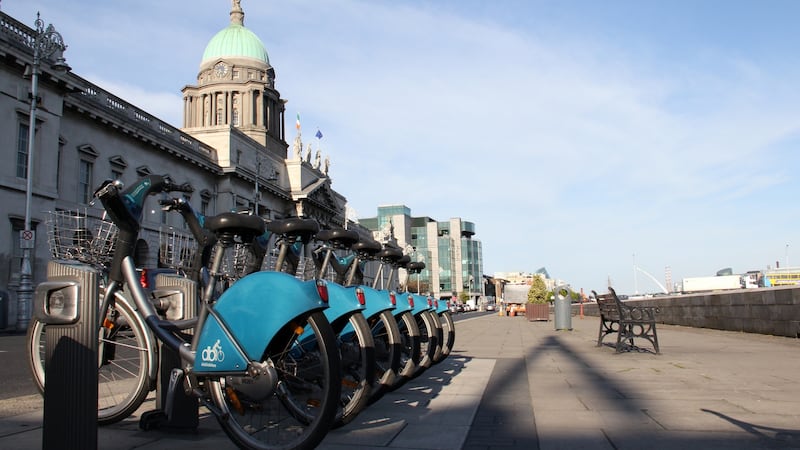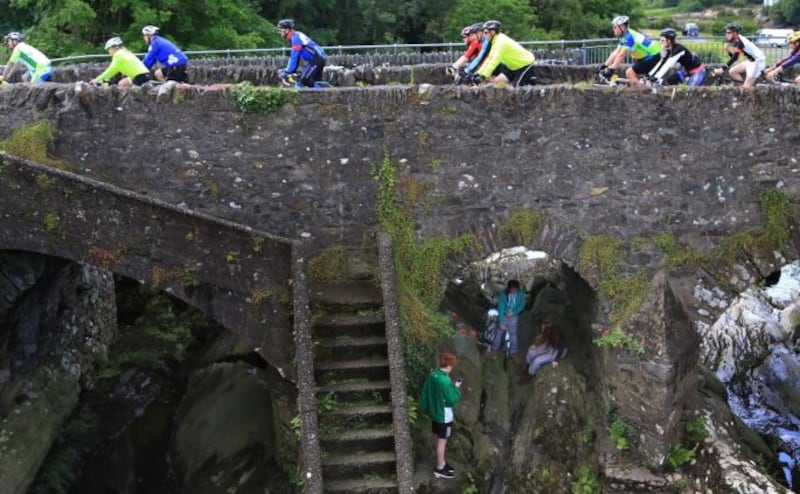You hear them before you see them. That unmistakable clack . . . clack . . . clack across the wooden floor of a coffee shop on a Sunday morning means only one thing: the cyclists have arrived.
And that sound is only becoming more common as the popularity of cycling increases in Ireland. In the latest Irish Sports Monitor survey, cycling is now only behind exercise (mainly consisting of gym-type activities), running and swimming in terms of participation and Cycling Ireland currently has over 25,000 members. That figure is up from just over 15,000 in 2012 and a huge increase on the 2,000 members of the organisation back in 1980.
The likes of city bikes in Dublin and the bike-to-work tax-relief scheme have made cycling mainstream for commuters and those going about their daily business, but the growth has been seen just as much in terms of cycling for leisure in open road cycling and various events around the country.
While plenty of column inches and webpages have been used to proclaim cycling as the new hobby for business executives to cut deals with a bike and some country roads replacing a set of clubs and a golf course, there are in fact plenty of comparisons to be drawn between the two sports.

The latest figures show that 5.1 per cent of the population participate in cycling while just 2.5 per cent say they regularly play golf. While that can be skewed by people using a bike to cycle to work and not necessarily in a sporting sense, other figures also show how the bike is pushing ahead, with over 450 clubs around the country, while the number of golf clubs has fallen below that same figure in recent years.
There is, of course, the caveat that to set up a cycling club you need little more in the way of facilities than a public road, while a golf club requires a course, maintenance staff, a clubhouse and much more. However, there’s no denying a trend towards cycling.
But what about the cost? Like golf, cycling is generally cited as one of the more expensive sports to get in to, with the equipment needed setting a customer a lot further back than, say, a pair of running shoes.
Robbie Woodcock is the marketing manager at Cycle Superstore in Tallaght. He says that the cycling retail industry is currently pretty steady but that there has been a boost seen in recent years. He agrees that the sport may have a reputation for being prohibitive in terms of cost but it doesn’t have to be.
“I wouldn’t disagree [with cycling being expensive],” he says. “There is this thing of ‘my bike is better than yours’ but we all have to start somewhere. We do also have the option of used bikes. We have a large section of used bikes and they’re all checked by mechanics and everything before being sold.
“In terms of those they’re all only a year or two old and everything is mechanically sound. You can buy a decent good quality bike for €400-€500 and if you’re using the cycle to work scheme you can save up to 50 per cent on it. Our main customer is the person cycling to work. They’d usually spend about €1,000 – probably €750 to €800 on a bike and then the last remaining €200 or so would be spent on accessories.
“It’s like golf in that if you were starting to play golf you wouldn’t go out and spend a fortune on a high end set of clubs. It’s the same with bikes, customers generally buy a decent bike first for around €1,000 and then after a couple of months or a year they realise they like the sport and they come back and trade the bike in and upgrade for something better.”
When asked about the potential high costs of the sport and why that may put some people off, Cycling Ireland pointed to their Cycle Right programme which is delivered to 30,000 schoolchildren annually and they will also launch a new programme at the end of this month for adults.
That initiative is called Axa Community Rides and it consists of free organised bike rides which range in difficulty from easy going to challenging. It is just one of the ways in which Cycling Ireland is encouraging people to get back on their bikes and be more active while also increasing the popularity further.
At Cycling Superstore, Woodcock says new customers that come in are usually looking to start cycling for one of three reasons.
“There are three main reasons for what’s growing the popularity [of cycling]. One is the green agenda – you only have to witness the results from the last local council elections to see that the green wave is becoming more and more popular and people are trying to adopt a greener lifestyle so a lot of people are swapping their cars for their bicycles.
“Another reason for the growth would be fitness regimes – more and more people are adopting a healthier lifestyle by taking part in sports such as cycling. The third one is that cycling as a holiday is becoming more and more popular and you can see that in the various greenways – such as the one down in Waterford.”
And indeed while the weather in Ireland may not always be the most co-operative for cycling, there are numerous parts of the country which can make for some of the most scenic cycles anywhere and can be used as a way to bring people into Ireland – much like a lot of the country’s world class golf courses do.
The annual Ring of Kerry Cycle is one such example. The event is run for charity and became so popular about five years ago that the organisers had to introduce a €100 entry fee and cap the number of participants due to safety concerns. There are now usually 6,500 to 7,000 cyclists who take part each year but it is the costs of such an event which can catch the eye.

Tony Daly is a director and organiser of the event and he says that they have to keep a close eye on costs and participation numbers each year in order to be able to raise a significant amount of money for charity.
“To organise an event like the Ring of Kerry you’re looking at around €300,000 in total and that varies year to year based on insurance, if we get new equipment and things like that,” he says. “It’s a huge amount of money and that’s why we need good numbers of participants each year to be able to give a meaningful amount of money back to the charities.
“The insurance costs are high. Cycling Ireland do offer insurance as well to a lot of events but we’re tied into a three-year deal with an insurance company and you’d be looking at around €35,000 to insure an event like that. And what you’re insuring is third party so if you’re walking on the road and I crash into you, you’re covered but I’m not covered. So there is an amount of personal risk.
“You have to keep looking at it [the numbers and costs]. We are lucky that we have good sponsorship coming in as well and our costs are pretty much the same each year but we watch it very carefully. We also need between 1,100 and 1,400 volunteers each year for the event to run.”
Daly says that numbers reached such a high around five years ago that the event used to sell out overnight but, since then, the increase in similar cycles around the country – Cycling Ireland says there are over 800 in 2019 – has led to the demand settling down.
“If we go back five or six years ago it used to sell out overnight and we had some technical glitches which caused headaches,” he says. “The organiser at the time wanted to do a lottery system and that upset people so we decided we had to put in an entry fee.
“At one stage there was no entry price, it was just come along and make a donation but it got too big. Since then we’ve brought it to a higher standard, set up a proper system for it and it’s more controlled now – it just got incredibly busy and we had to try and cap it.”
There could be no clearer indication that the cycling boom shows no signs of stopping.
– This article is part of a series of consumer-based sports stories. If you have any queries, stories or issues regarding travel, tickets, sport on television or anything else you can email rcroke@irishtimes.com or via Twitter @Ruaidhri_Croke.
















